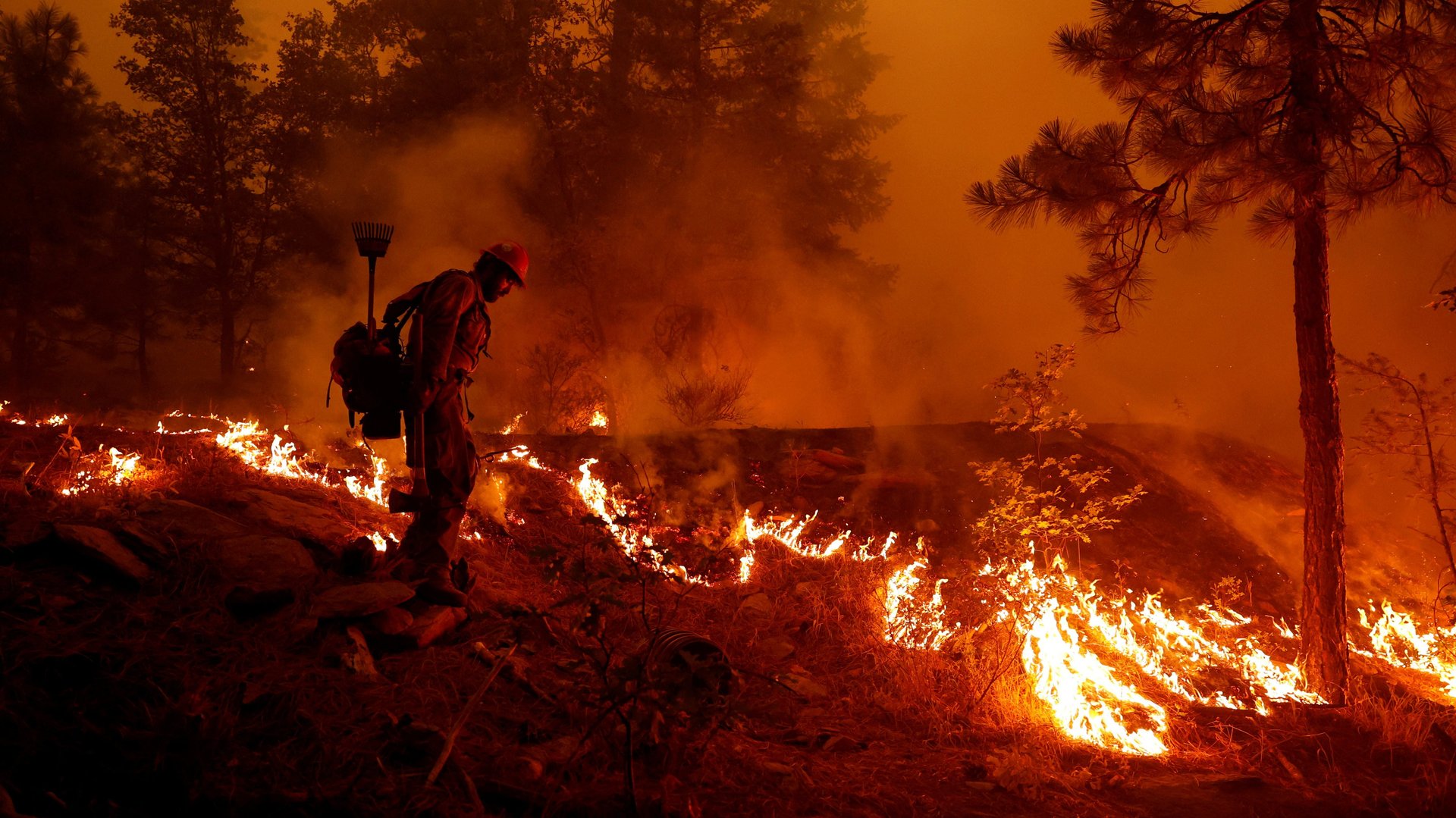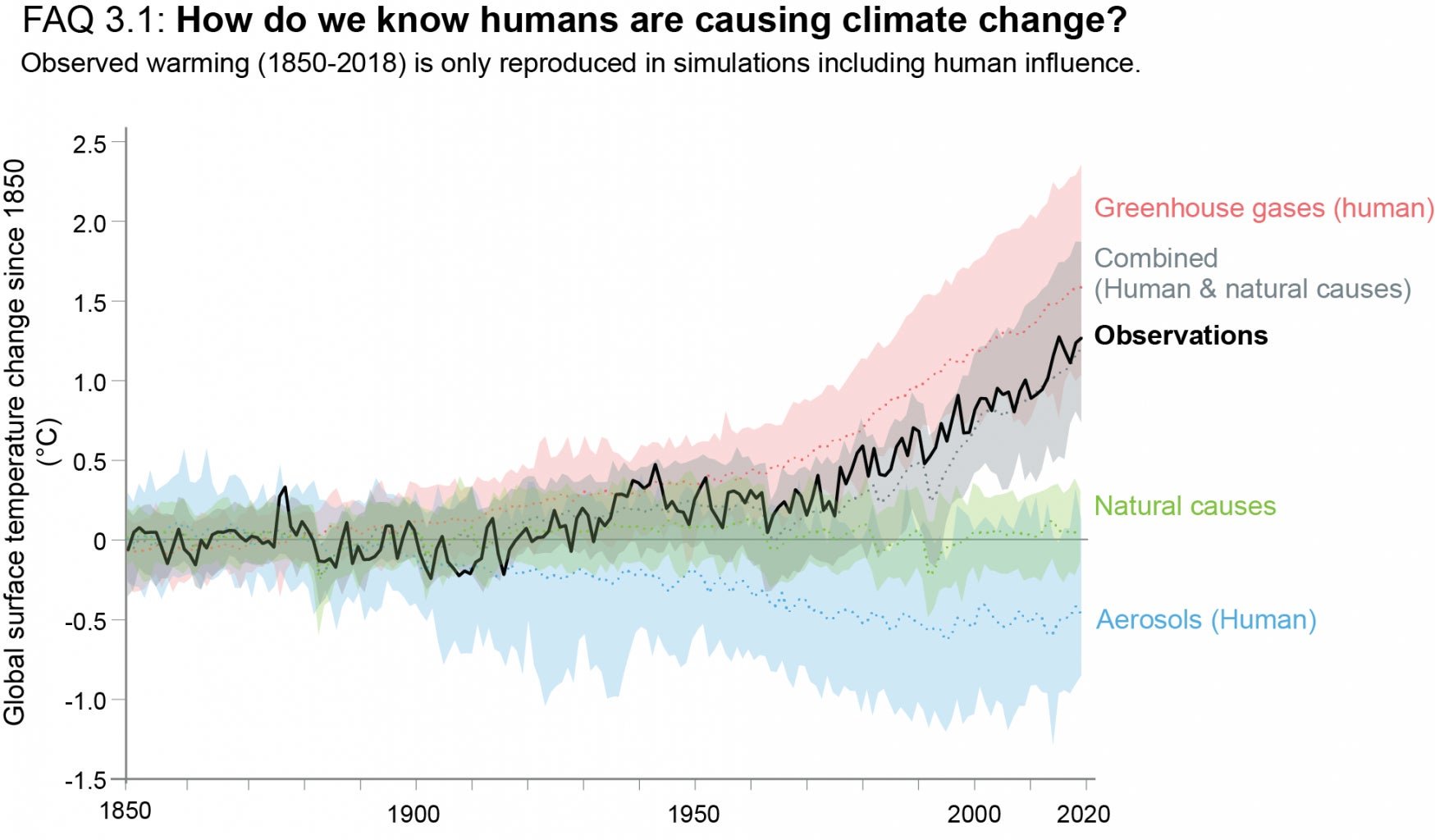The climate change crisis is already here, but there’s still a chance to prevent the worst
The growing number of severe heatwaves, droughts, floods, and wildfires that have plagued the US and other countries over the last several years are almost certainly a direct result of human greenhouse gas emissions. So says the Intergovernmental Panel on Climate Change (IPCC), a group of hundreds of the world’s top scientists, convened by the United Nations.


The growing number of severe heatwaves, droughts, floods, and wildfires that have plagued the US and other countries over the last several years are almost certainly a direct result of human greenhouse gas emissions. So says the Intergovernmental Panel on Climate Change (IPCC), a group of hundreds of the world’s top scientists, convened by the United Nations.
The IPCC has produced an authoritative, exhaustive summary of climate research about twice per decade since 1990. The original 1990 IPCC report framed climate change as a problem for the future. The group’s latest report makes clear that it is a crisis that is already well underway.
What does the IPCC say about climate change?
It is “unequivocal,” the report concludes, that “human influence has warmed the atmosphere, ocean and land.” And scientists are far more certain now than they were a decade ago that human-caused global warming is responsible for much of the extreme weather that has already occurred. Many of the world’s recent heatwaves, in particular, “would have been extremely unlikely to occur without human influence on the climate system,” the report says.
“Extreme events, heat waves, droughts, heavy precipitation: When we see these things in the news, they really are a result of climate change and the science is really able to detect that,” said Jessica Tierney, a climate scientist at the University of Arizona and a co-author of the IPCC report’s section on drought and the global water cycle. “You can always get an extreme flood or drought by chance, but now we can show that the chances of some of these events happening would have been almost nil.”
The IPCC’s assessment reports are divided into three major sections. The first piece of the newest report, Working Group 1, addresses the physical science of climate change and was published Aug. 9; it’s a meticulous summary of more than 14,000 peer-reviewed papers compiled by 234 authors from 66 countries. Two other working groups addressing climate adaptation and mitigation options will be published in 2022.
In addition to advances in research since the last IPCC report, the first piece of which was published in 2013, Tierney said that the rising number and extremity of natural catastrophes has strengthened scientists’ certainty that climate change is here. The seven warmest years globally since the Industrial Revolution have all happened since 2014.
At the time of the prior IPCC report, “these extreme events were occurring, but some of them weren’t outside the range of what we would expect based on chance or natural variability,” she said. “Whereas now, they’re way outside of that. Unfortunately, in the last eight years we’ve really been living through these changes.”
Will climate change be as bad as the IPCC predicts?
The report concludes that global average temperatures have increased about 1.07° Celsius since 1850—and the odds of restricting future warming to 1.5°C, which was the goal of the 2015 Paris Agreement and a level that would yield measurable impact on ecosystems and the economy, are rapidly vanishing.
Instead, a more likely trajectory is that temperatures will pass the 1.5C mark by 2040, and possibly as early as the early 2030s, which is about a decade earlier than the last IPCC report projected. After that, in a median emissions scenario, temperature rise could approach 3°C by 2100.
More details about the effects the world can expect to see in that case will be spelled out in the next two sections of the report, due to be published in early 2022. But scientists are already confident that it is likely to be a world in which there is little to no sea ice or glaciers, life-threatening heat waves are routine, food and water shortages grow more severe, and millions of people are displaced as major cities like Miami and Shanghai disappear underwater.
This outcome is not guaranteed, though.
Will we quickly reduce carbon emissions or end up in “Trump World”?
This IPCC report is the first to incorporate forecasts based on the Shared Socioeconomic Pathways, a series of scenarios produced by scientists to aid their understanding of how political and economic trends might shape the future climate. In the most optimistic scenario, in which the global community bands together to rapidly—as in, starting today—replace fossil fuels with zero-carbon energy and scale up carbon-capture technology, a 1.5°C limit may still be within reach. Conversely, in the scenario some scientists dub “Trump World,” in which decarbonization is slow and geopolitical conflict is high, the temperature rise is likely to exceed 3°C.
The divergence in those scenarios vividly illustrates the challenge that awaits politicians at COP26, the global climate summit taking place in Glasgow in November.
COP26: A chance for global cooperation on climate change
The COP26 summit is meant to be an opportunity for wealthy, high-emissions countries to accelerate their decarbonization goals and also make more funding available for climate adaptation in developing countries. But the funding goal is tens of billions of dollars short, while China and India are bristling at a plan by the European Union to tax high-carbon imports. Meanwhile, top oil exporter Saudi Arabia recently vowed to squeeze “every molecule of hydrocarbon” from its sand, and a recent meeting of G20 environment ministers failed to set a date to phase out coal-fired power plants.
On the positive side, political cooperation and technological advances in clean energy are moving more quickly than they were eight years ago, said Richard Seager, a climate scientist at Columbia University’s Lamont-Doherty Earth Observatory, who was not an author on this IPCC report. But the progress is fragile, and insufficient.
“We’re not on a trajectory where radical, dramatic action to decarbonize is occurring in the near term future,” Seager said. “So we’re taking action to avoid the very worst cases, but the scenarios we’re going to end up in will still have some pretty awful outcomes, as we’re seeing. We have a window of opportunity, but it’s not one that’s locked in given the geopolitics we’re looking at right now.”
How strong is the scientific case for man-made global warming?
Scientists’ fundamental understanding that man-made greenhouse gas emissions have a warming effect on the climate has not changed since the first IPCC report. But over time, including since the last IPCC report in 2013-14, they have accumulated significantly more data on ancient and contemporary changes in climate patterns—drawn from tree rings, satellites, and a host of other sources—that illuminate the sensitivity of the atmosphere, oceans, and forests to changes in emissions. These data, plus observed recent temperature changes and improvement in climate modeling, indicate that the climate is more sensitive to CO2 emissions than scientists understood in the 2013 report.
Although solar radiation and volcanic activity influence the climate, changes in global temperature over the last several decades can be explained only when human activity is taken into account.

The IPCC report shows how rising temperatures exacerbates extreme weather
The IPCC’s findings are grim. The world of 2050 will unquestionably be a more challenging place to live, regardless of what actions are taken today. For example, severe heat waves that occurred just once every 50 years in 1900 now occur about 4.8 times per 50 years. In a 1.5°C world, that heat wave would occur 8.6 times every 50 years, and in a 2°C world, 13.9 times.
Yet the report also underscores crucial differences between the future warming scenarios, and makes clear that changes that are still within our grasp would make an enormous difference.
“There is a pernicious side to thinking there’s a threshold we cross and then it’s all over,” said Jochem Marotzke, a climate scientist at the Max Planke Institute for Meteorology in Germany and an author of the IPCC report chapter dealing with long-term warming projections. “That suggests that beyond a certain point it doesn’t matter what we do. And that is not true. No matter what level of global warming we’re at, we can still limit additional risk by limiting additional warming. So it’s never too late, and there is no point of no return.”
As the chart above shows, the difference of 0.5°C in global temperature rise nearly doubles the risk of extreme heat events. Preventing that that increase is still possible, but only if individuals and political and business leaders take immediate, concerted action.
Businesses need to adapt to climate change
In the meantime, adaptation is mandatory for survival. Businesses that don’t take steps to prepare now—whether that means relocating away from flood zones, securing alternative supply chains, or transitioning away from carbon-intensive business models—are unlikely to survive, said Lou Gritzo, vice president of research at FM Global, one of the world’s largest commercial property insurers.
“I think this report is going to be a point of departure for companies to start looking at their business in a very different way,” he said. “This will be a catalyst for more companies to take action, and I hope it spurs some innovation.”